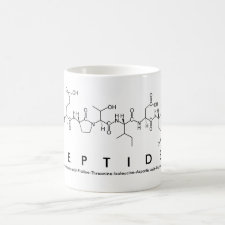
Authors: Naklua W, Mahesh K, Aundorn P, Tanmanee N, Aenukulpong K, Sutto S, Chen YZ, Chen SY, Suedee R
Article Title: An imprinted dopamine receptor for discovery of highly potent and selective D3 analogues with neuroprotective effects.
Publication date: 2015
Journal: Process Biochemistry
Volume: 50
Issue: (10)
Page numbers: 1537-1556.
DOI: 10.1016/j.procbio.2015.06.018
Alternative URL: http://www.sciencedirect.com/science/article/pii/S1359511315300271
Abstract: In this study, we have developed a novel molecular imprinting method for the cloning of a drug with multiple templates to achieve a broad selectivity, and then produce reactive dopamine analogs. The products were produced within selective recognition sites of the artificial system prepared against dopamine (D) and serotonin (S) as a single and a mixed template. As a consequence of the functionality of the anchoring sites being was able to make proximity changes that could promote changes in the nanosized space for surface access for the reactants but avoided the non-active center of the formed nanosized assembly. The most effective analogues had a Bmax of the DS-MIP (1.0 M per g polymer) that was about twice that of the D-MIP. The receptor-ligand interaction studies revealed differences in the absorbance by the rat hypothalamus, and indicated that an additional potent hit was obvious. The dopamine analogs had a smaller space for receptor subtypes as determined by molecular docking and the implication of the selective D3 receptor agonists as well as the 5HT1b receptors, for the treatment of Parkinson's disease. The proposed model indicated a possible role from the desired fragments that had been inserted into a specific binding pocket of the protein near to the gorge rim as being the significant pharmacophore of this class. They showed good binding affinity for the 5-HT1b receptors. The screening test with a natural D1 receptor yielded a Bmax of 0.44 μM and the corresponding Kd values were 100-500 nM. Thus, this process that occurred in an artificial dopamine-imprinted receptor allowed for preclinical testing to identify possible neuroleptic agents and their neuroprotective effects hopefully with reduced side effects
Template and target information: dual template, dopamine, D, serotonin, S
Author keywords: molecularly imprinted polymer, Bioassays, Biomimic receptor, Neurobiology, Regenerative medicine, Impulse control disorders



Join the Society for Molecular Imprinting

New items RSS feed
Sign-up for e-mail updates:
Choose between receiving an occasional newsletter or more frequent e-mail alerts.
Click here to go to the sign-up page.
Is your name elemental or peptidic? Enter your name and find out by clicking either of the buttons below!
Other products you may like:
 MIPdatabase
MIPdatabase









